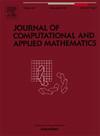考虑模型分配和能耗的人机协作混合模型多装配线双目标优化
IF 2.6
2区 数学
Q1 MATHEMATICS, APPLIED
Journal of Computational and Applied Mathematics
Pub Date : 2025-06-21
DOI:10.1016/j.cam.2025.116876
引用次数: 0
摘要
在混合模型和多生产线生产环境中,一个关键但经常被忽视的挑战是模型-生产线分配问题——决定哪些产品模型应该分配到哪些装配线。这个决策对整体生产效率有深远的影响,因为它直接影响到后续的平衡和调度决策。将协作机器人(cobots)集成到这些环境中进一步使这项任务复杂化。尽管具有重要意义,但在文献中,模型线分配和机器人线平衡的联合考虑受到了有限的关注。本研究提出了机器人混合模型多装配线同步分配平衡问题(MLA-RMMALB),并提出了一个多目标混合整数规划模型来解决这一问题。该模型旨在最大限度地降低总生产成本和因协作机器人的能源消耗而产生的PM2.5排放。针对该问题的复杂性,提出了非支配排序遗传算法II (NSGA-II)作为求解方法。通过一个涉及21个任务和文献中的基准问题的数值算例证明了该模型的有效性。将集成模型线分配下得到的解与随机分配方案进行了比较,揭示了两种目标的显著性能提升。事实证明,NSGA-II能够有效地为中小型实例提供最佳或接近最佳的解决方案,并为较大的问题提供高质量的结果。本研究通过联合考虑模型线分配、协作机器人异质性以及协作机器人和人类工人的并行操作,解决了多线混合模型生产中的关键挑战,从而为文献做出了贡献。提出NSGA-II作为解决这一复杂问题的有效方法。实际上,该研究为旨在优化机器人装配系统的成本效益和环境绩效的制造商提供了决策支持工具。这些发现对于在多种生产环境中采用协作机器人的行业尤其重要,因为这些因素必须同时进行管理。本文章由计算机程序翻译,如有差异,请以英文原文为准。
Bi-objective optimization of human-robot collaborative mixed-model multiple assembly lines considering model assignment and energy consumption
A critical yet often overlooked challenge in mixed-model and multi-line production environments is the model-line assignment problem–deciding which product models should be allocated to which assembly lines. This decision has a profound effect on overall production efficiency, as it directly influences subsequent balancing and scheduling decisions. The integration of collaborative robots (cobots) into these environments further complicates this task. Despite its significance, the joint consideration of model-line assignment and robotic line balancing has received limited attention in the literature. This study addresses this gap by formulating the robotic mixed-model multiple assembly line balancing problem with simultaneous model-line assignment (MLA-RMMALB) and proposing a multi-objective mixed-integer programming model. The model aims to minimize total production costs and emissions resulting from cobots’ energy consumption. To handle the complexity of the problem, a Non-dominated Sorting Genetic Algorithm II (NSGA-II) is developed as a solution approach. The model's effectiveness is demonstrated through a numerical example involving 21 tasks and benchmark problems from the literature. Solutions obtained under integrated model-line assignment are compared with random assignment scenarios, revealing significant performance gains in both objectives. NSGA-II proves capable of delivering optimal or near-optimal solutions efficiently for small- and medium-sized instances, and high-quality results for larger problems. This study contributes to literature by addressing critical challenges in multi-line mixed-model production by jointly considering model-line assignment, cobot heterogeneity, and the parallel operation of cobots and human workers. It proposes NSGA-II as an effective solution method for this complex problem. Practically, the study provides a decision-support tool for manufacturers aiming to optimize both cost-efficiency and environmental performance in robotic assembly systems. The findings are especially relevant for industries adopting cobots in high-variety production environments where these factors must be simultaneously managed.
求助全文
通过发布文献求助,成功后即可免费获取论文全文。
去求助
来源期刊
CiteScore
5.40
自引率
4.20%
发文量
437
审稿时长
3.0 months
期刊介绍:
The Journal of Computational and Applied Mathematics publishes original papers of high scientific value in all areas of computational and applied mathematics. The main interest of the Journal is in papers that describe and analyze new computational techniques for solving scientific or engineering problems. Also the improved analysis, including the effectiveness and applicability, of existing methods and algorithms is of importance. The computational efficiency (e.g. the convergence, stability, accuracy, ...) should be proved and illustrated by nontrivial numerical examples. Papers describing only variants of existing methods, without adding significant new computational properties are not of interest.
The audience consists of: applied mathematicians, numerical analysts, computational scientists and engineers.

 求助内容:
求助内容: 应助结果提醒方式:
应助结果提醒方式:


